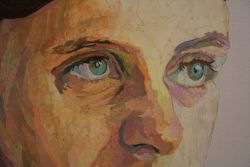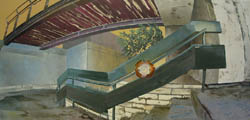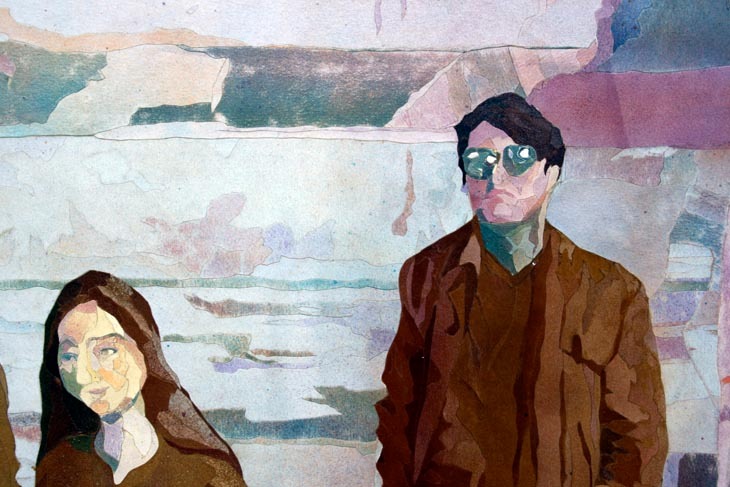
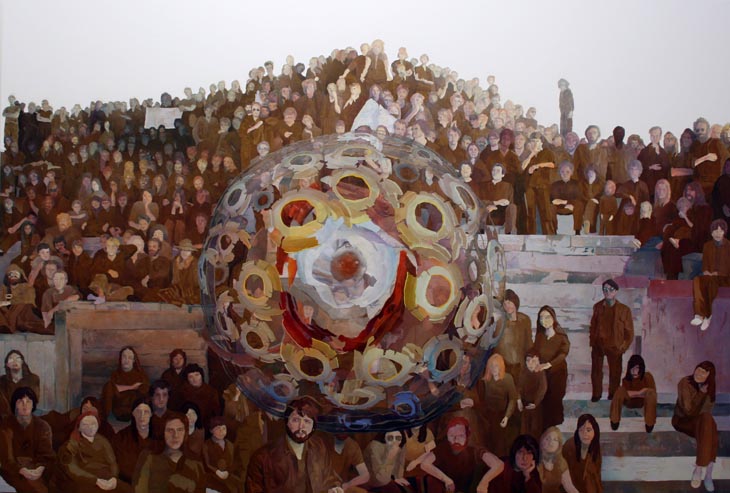

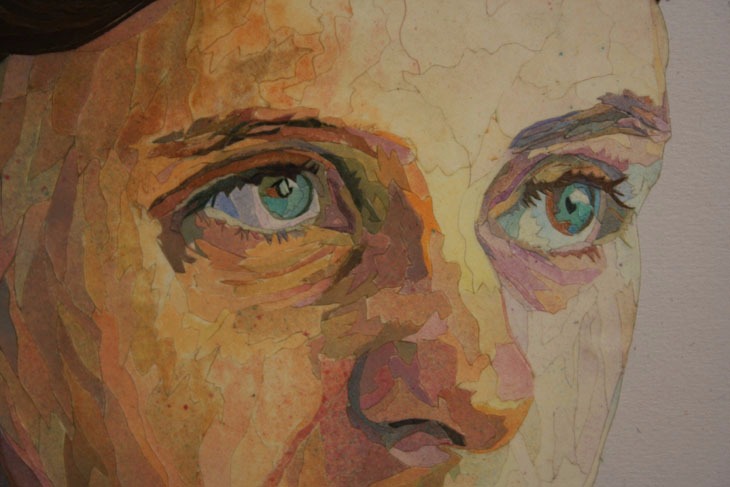
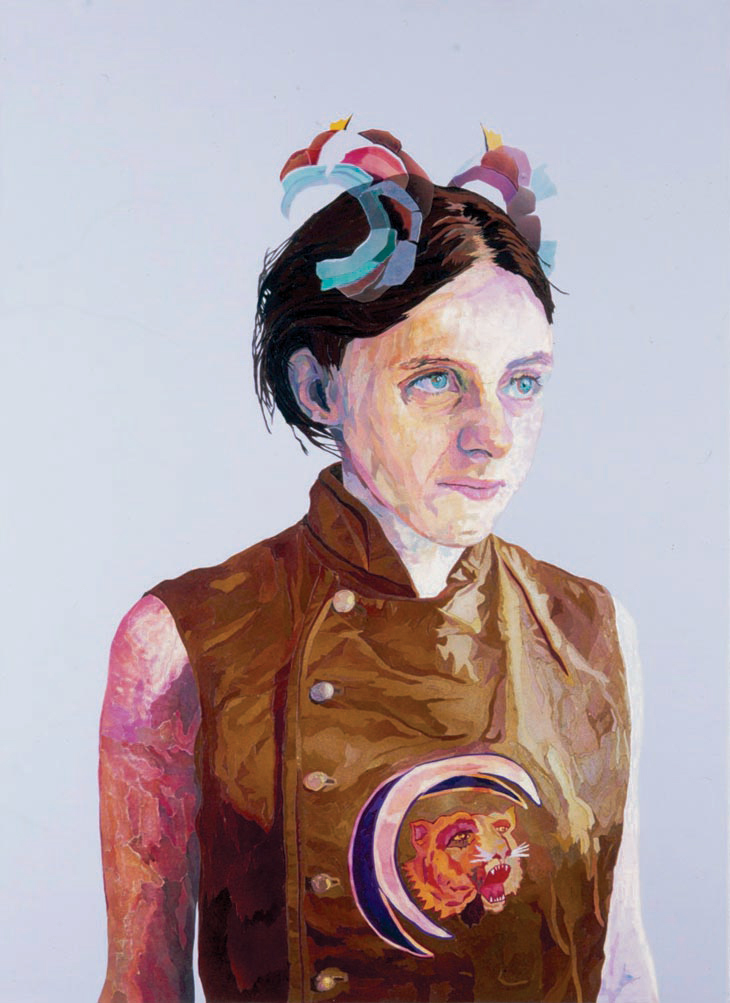
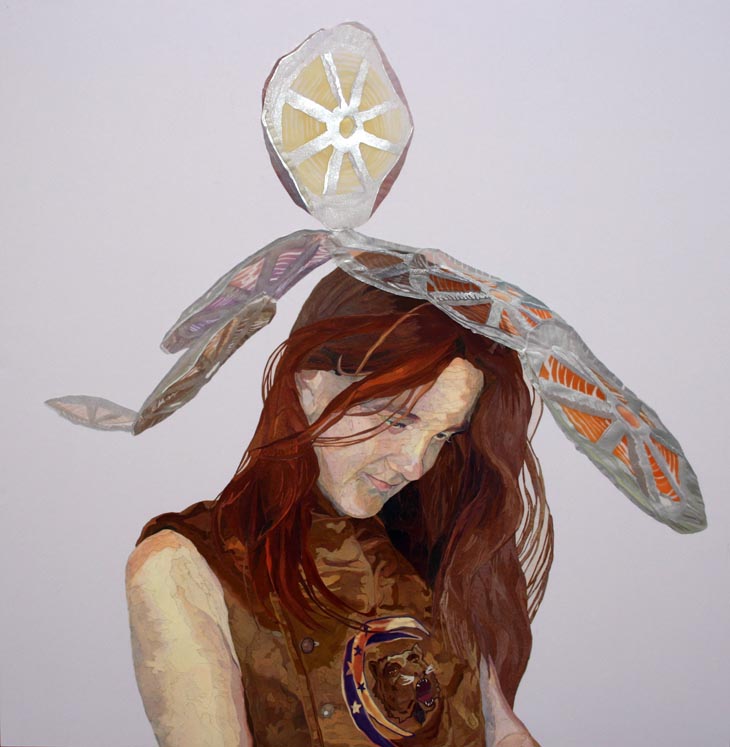
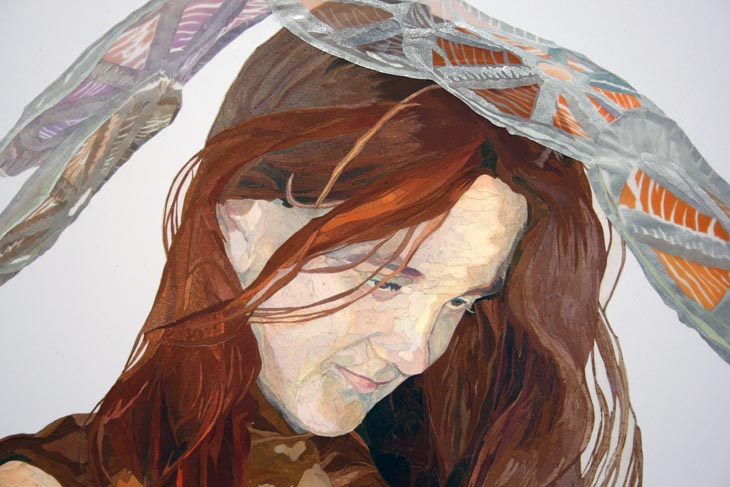
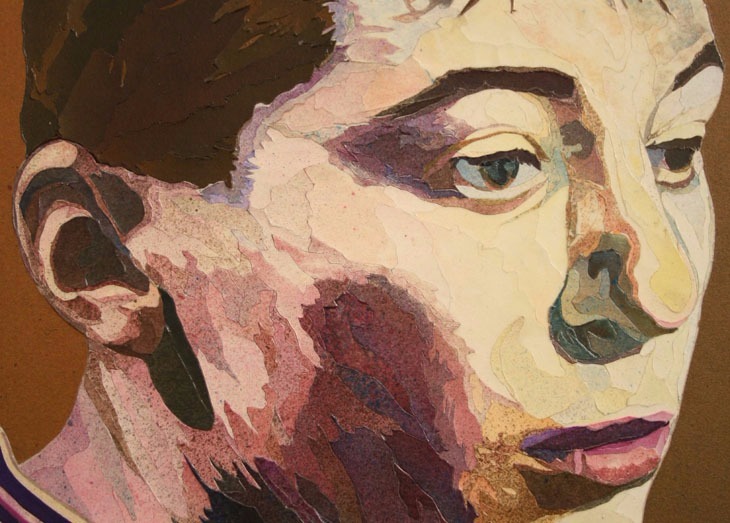
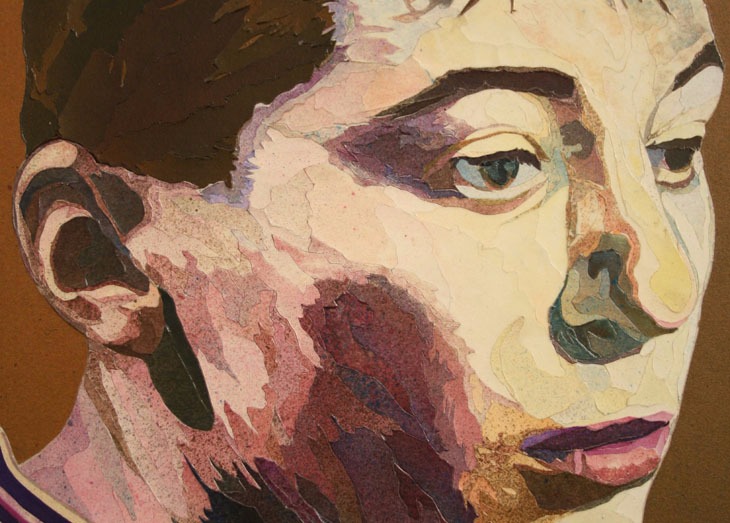


Paul Johnson
Paul Johnson describes his work as “fiction”. In this series of work, each of his figures is a compilation of three different elements: a head, body, and uniform, each separately sourced from found photographs. “They have a Masonic ritual quality,” says Johnson. “The three elements are drawn, photographed, then photocopied before they are collaged. The intention is to construct a real person. In Sister, the girl has a floating or constructed aura above her head, these abstract forms are the thought patterns or feelings this person is having. They also can be read as hair adornments that echo some form of ritual she might be going through. Most of my portraits have a passiveness to them. The figures are kind of turned away, slightly switched off as if other things are happening to them and they are not in control of themselves.”
“I think of my portraits as a constructed family: one leads to the other, and though related they become increasingly disparate. They’re like dream scenarios, and nod to a tradition of romanticism and the Pre-Raphaelites. The girl in Guide is from a photograph of a murderess, though in the painting she looks quite innocent. I called it Guide in reference to the disc motifs – the badge on her chest and the auras around her head – it’s like she’s being guided by some other force, where reality and imagination become confused. The shape of the aura comes from a lid my friend in Texas found on the road. It has a formal but broken quality. I like the virtual aspect of how it came from the ground, to the Internet, to another country, to become something completely new in the painting.”
Johnson develops his works as intricately assembled paper ‘mosaics’. The images he works from are cut into jigsaw-like pieces, “each element is hand-cut, hand coloured and then interlocked back into itself.” Johnson explains. “The whole surface is completely flat, and they operate as if they are paintings. My work is very lovingly handcrafted and labour-intensive, and I think about them as almost something that a monk from the Middle Ages would make, they have a devotional or possible religious quality to them. That’s where the title Brother Benedict comes from. They’re half about the everyday, and half about other more thoughtful things, and suggest ideas about spiritualism or the contemporary sublime. Youth culture is an undercurrent in my work, it’s like they’re involved in some sort of group – everyone’s got a logo, like some kind of teenage gang; the one in Brother Benedict comes from a lodge banner.”


